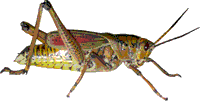Entomology Collections, General

Entomology Papers from Other Sources
Document Type
Article
Date of this Version
1998
Abstract
The long-term goal of this study was to use solitary bees to assess the impact of advancing Africanized honey bees (Apis mellifcra scutellata Lepeletier) on the native California bee fauna. Cavity-nesting, solitary bee species were systematically monitored in wooden trap nests at 6 sites in northern central California from 1990 to 1992. Three sites were in the San Joaquin Valley in wildlife refuges or preserves; 3 were in coastal mountain or Sierran foothill parks or reserves. Differences in frequencies of nesting bees were observed and recorded among sites and habitats through time. A Poisson regression indicated that all explanatory variables and their 1st order interactions were highly significant. There were significant differences among bee taxa, sites and years, and their interactions (bee X site; bee X year; site X year). Megachile species were the predominant cavity nesters in the 3 valley sites; Osmia species were the common group in coastal mountain I foothill sites. In a computer simulation, using a variation of the Poisson regression, several significant differences were also observed between yearly frequency counts for certain bee species at the same site. Possible reasons for year to year changes included differential natural mortality, extreme annual weather patterns, use of marginal habitats, and negative impacts from exotic solitary bee species. Three exotic megachilids (Megachile rotundata (F.), M. apicalis Spinola, and M. concinna Smith) have successfully invaded and become established in California. Possibly, M. apicalis has affected other cavity nesting bee species, including the exotic M. rotundata in our Central Valley sites.


Comments
Published in Environ. Entomol. 27(5): 1137-1148 (1998).